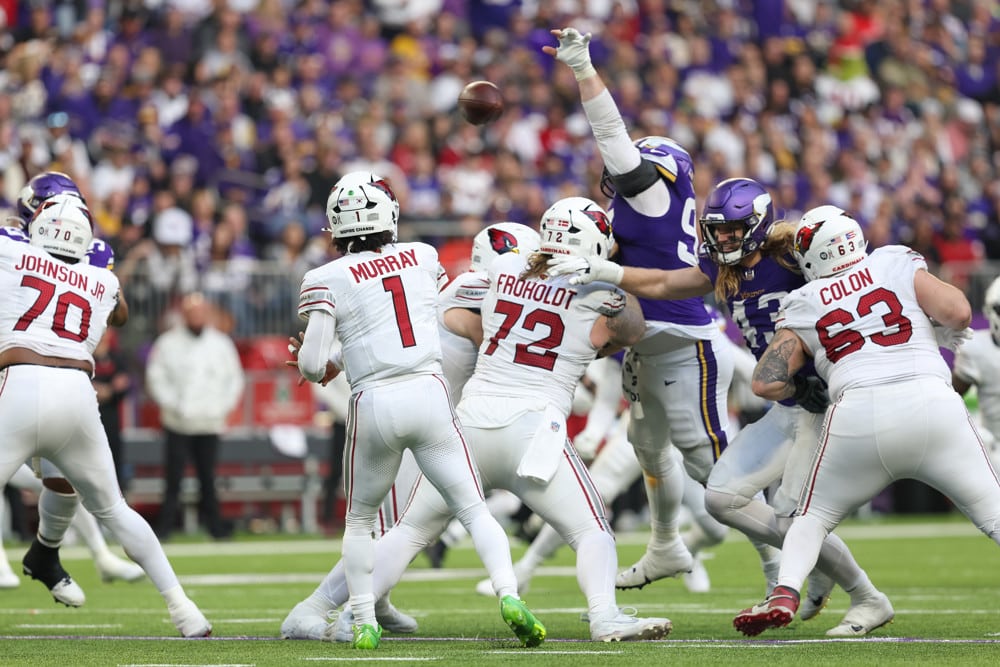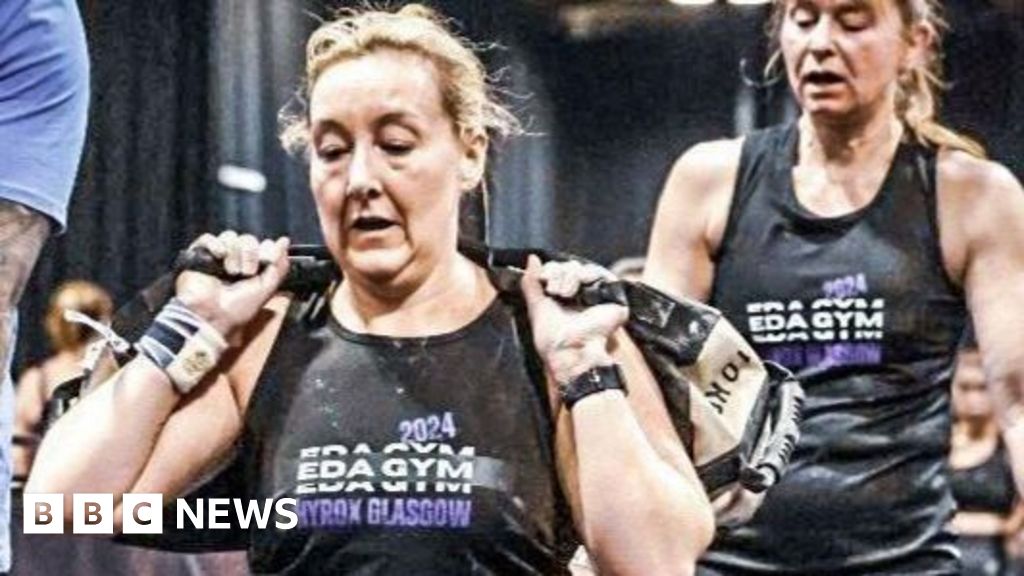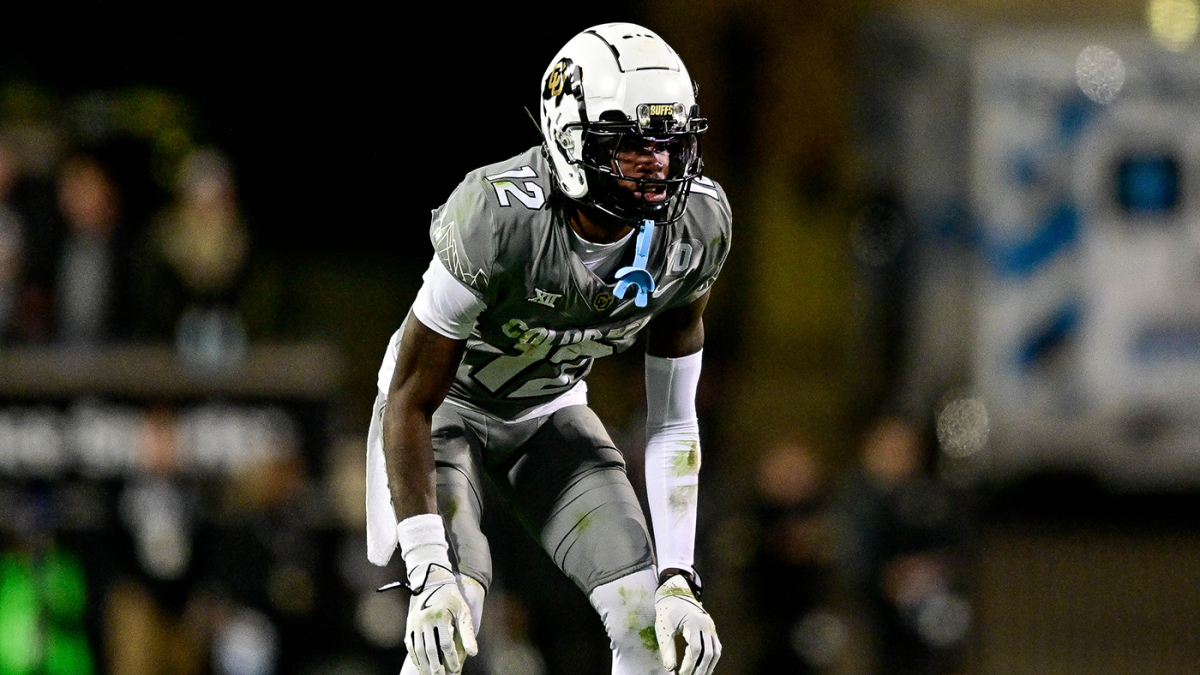Sports
Point/Counterpoint: Injury Reports and Gambling in College Sports

Virginia basketball fans may wonder as to the injury status of Christian Bliss, a four-star point guard who redshirted last year and was supposed to be the point guard of the future. Yet ten games into the season, he hasn’t dressed out once. New coach Ron Sanchez is as maddeningly reticent to talk about player availability as the old coach. Beat reporters know that asking about Bliss’ timeline will not get an answer.
So what gives? Val and Matt discuss the ramifications behind coach stonewalling and see an unlikely ally for the forces of transparency.
Val: If you are a long time fan of college sports, watching players grow and mature in their four years at Good Ole U was probably one of the reasons. I’m talking to a 25-year-old, but I’m guessing that was true for you, too, Matt? And if you were a fan of that model, the past three years have been especially jarring. While most of us fully support players having the right to find their proper fit, the free agency of the transfer portal has changed the game. And with the advent of the NIL regime, players can be reimbursed for services outside of the game on the field. Let’s face it, college sports have professionalized, and it’s going to take another step along the continuum as next year, colleges and universities can spend up to $20 million on their players.
One of the least professional aspects of college sports, and one that I hope modernizes with this increasing professionalization is reporting of player availability. And the impetus for that may come from an improbable source: gambling.
Matt: I must agree that trying to get accurate and updated information regarding injuries from college coaches is often like pulling teeth. In my six years covering UVA sports, there have been several examples of coaches giving inaccurate or misleading answers regarding player availability and countless more instances of coaches just avoiding the questions entirely. It’s hard to blame the coaches – if they aren’t obligated to provide injury reports, why should they divulge this information? But as reporters, we have to ask the questions even if we know we won’t get the answers we’re looking for.
Even Tony Elliott, who I view as one of the most forthright coaches in college football in terms of providing in-depth status updates on injured players every week, has had his moments of being misleading in those injury reports. Earlier this season, wide receiver Trell Harris was listed as “day-to-day” for a few weeks before Elliott finally announced that Harris was undergoing surgery and he wound up missing eight games. I understand wanting to keep some player availability information from future opponents for strategic purposes, and we aren’t looking for a level of injury detail that would constitute a HIPPA violation, but it seems that there are far too many instances of coaches needlessly concealing a player’s availability status for an upcoming game when it doesn’t really give either team an advantage in preparation.
Val: Coaches hide behind HIPPA all the time, and while I understand that these are young men and women who ought to have some level of privacy, the fact is that a 20-year-old playing on a college team – in public and streamed for everyone to see, as well as possibly being a scholarship or NIL recipient – has put themselves on display as it were. If I can be blunt, I think that a college student, who is most likely an adult, ought to waive their right to privacy. It happens at the pro level, not because pros have less of a right, but because they have a bargaining agreement that says they waive that right to be able to earn the big bucks.
But short of a bargaining agreement, it could just be a lot simpler if there was just basic transparency. For instance… three years ago, Camryn Taylor, then Virginia’s female hoopster just went missing. She played the first 12 games of the season. And then was gone. No notice, no explanation, and I got my then-editor to specifically ask the media relations person. No answer. The next year Taylor rejoined the team and everybody seemed to know that her mother had passed the year before and she had never taken the time to deal with her loss. If there is a more unimpeachable reason for taking time off than the death of a loved one, I haven’t heard it. And we should have known at the time.
Now, college sport is making the move toward greater transparency as you’ve discovered with the SEC, right, Matt?
Matt: Yes. Both the SEC and the Big Ten have begun to require “player availability reports” over the last year or so. The Big Ten got the ball rolling prior to the 2023 football season by requiring injury reports to be submitted by their member programs at least two hours before kickoff. The SEC followed suit in 2024 and took it up a notch, implementing availability reports in football, basketball and baseball. For football, SEC teams now have to provide an initial availability report on Wednesday before a Saturday in-conference game, with updates required on Thursday, Friday, and then Saturday 90 minutes before kickoff. The commissioners of both the SEC and Big Ten said that these changes were made to protect student athletes and the integrity of the sport, but there’s no question that sports gambling is playing a massive role in this development. SEC commissioner Greg Sankey even said, “This availability reporting policy is intended to reduce pressure from outside entities seeking participation information…” The SEC and Big Ten are the kings of college football, as evidenced by their combined seven bids to the first 12-team College Football Playoff. I expect the other conferences to follow suit with similar practices regarding official injury reports in the very near future.
Val: Gambling is everywhere. The big betting houses, whether it is Caesars, FanDuel, or DraftKings, are free to advertise during games, sponsor professional teams and put their logos on jerseys and basketball courts. To the tune of $66 billion in 2023.
Now, the NCAA, or what’s left of its burning carcass, is trying to stay pure, and resist the siren call of easy money, but we all know that that is a losing prop. (You see what I did there?) If A.J. Dybantsa is getting $7 million this year to play for BYU, every school, everywhere, needs more money.
I’ll label my bias here: I think gambling is wrong. It is a societal evil and a personal ill. And it’s a risk to college players. https://www.theguardian.com/sport/2024/apr/10/angel-reese-death-threats-gambling-college-sports-ncaa
Purdue’s Carson Barrett knocked home a three late in the game in Purdue’s win over Grambling in the first round of the NCAA Tournament last year. Barrett was an end-of-the-bench kind of guy who averaged 1.8 minutes and half a point per game. That should have been a highlight for him. Instead, he got a DM on Instagram threatening to slit his throat. Almost a third of higher-profile NCAA athletes have gotten threats and abuse via social media for their role in games.
So, you are right Matt, those “outside entities” can be anyone, and publishing accurate injury and availability updates can go a long way towards protecting student athletes.
Matt: Unfortunately, there’s no reversing the path college athletics is on. The professionalization of college sports is inevitable and some would argue that it’s already here. But like NIL and the transfer portal, I think some of these changes can be good if the right guardrails are in place. If mandated injury reports are the future of college sports, then entities like the Big Ten and the SEC, where the real power lies, must pair those changes with concerted efforts to mitigate the negative repercussions of sports gambling. When the Big Ten announced it was implementing mandatory injury reports, it also announced that it was partnering with U.S. Integrity, a sports wagering monitoring company, to “help prevent student-athletes, coaches, and staff from engaging in prohibited sports wagering.” That’s all well and good, but the fact that the Big Ten did not also simultaneously make a grand effort to take a stand against gamblers who make threats against athletes makes me wonder where the well-being of student-athletes actually sits in the list of priorities for these all-powerful organizations. If we’re going to acknowledge sports gambling so plainly, let’s not leave out what is perhaps its ugliest and gravest aspect.
Val: So what it comes down to is this: coaches are going to have to be more forthcoming about who can play, and who cannot. All the professional leagues require the injury reports that any sports fan is familiar with: questionable, doubtful and out. Been doing so for years. I just found out that the NFL has been mandating this since 1947!
As then commissioner Bert Bell said: “Because of their spies the big gambling houses may know [Sammy] Baugh is hurt and probably won’t be at his best if he plays at all. But the public won’t know. The public may fall for prices that seem good but aren’t because of Baugh’s injury.”
This is the silver lining of gambling’s reach. Eventually we’re going to reasonably accurate, and timely, injury reporting. And maybe Virginia fans will know how long Dai Dai Ames is going to be out. Because coaches are just so squirrely about giving out any information that might be used by the opposition.
And it doesn’t matter.
Four years ago, the Virginia women’s soccer team was due to play Florida State and Jaelin Howell, who was in the middle of her second Mac Hermann trophy season, was doubtful. She was in training with the US women’s national team and had made her debut. The question was whether she would even make it back for the game, and secondarily if she mightn’t need to rest. (She played.) I asked UVA women’s soccer coach Steve Swanson if he’d game planned Howell’s absence. He didn’t. The women didn’t practice any differently. I was astounded by this revelation. How do you not prepare to attack the space in front of the front four if the best player in college soccer isn’t there? The answer is that coaches don’t care. They prepare to face a team, and one player’s absence isn’t going to change anything.
I guarantee you that there isn’t a coach out there who cares about whether Christian Bliss is playing or not. But we as fans do. Ron Sanchez owes us that. But he’s going to need a cattle prod to give it to us. I’m hoping that gambling provides that nudge.









